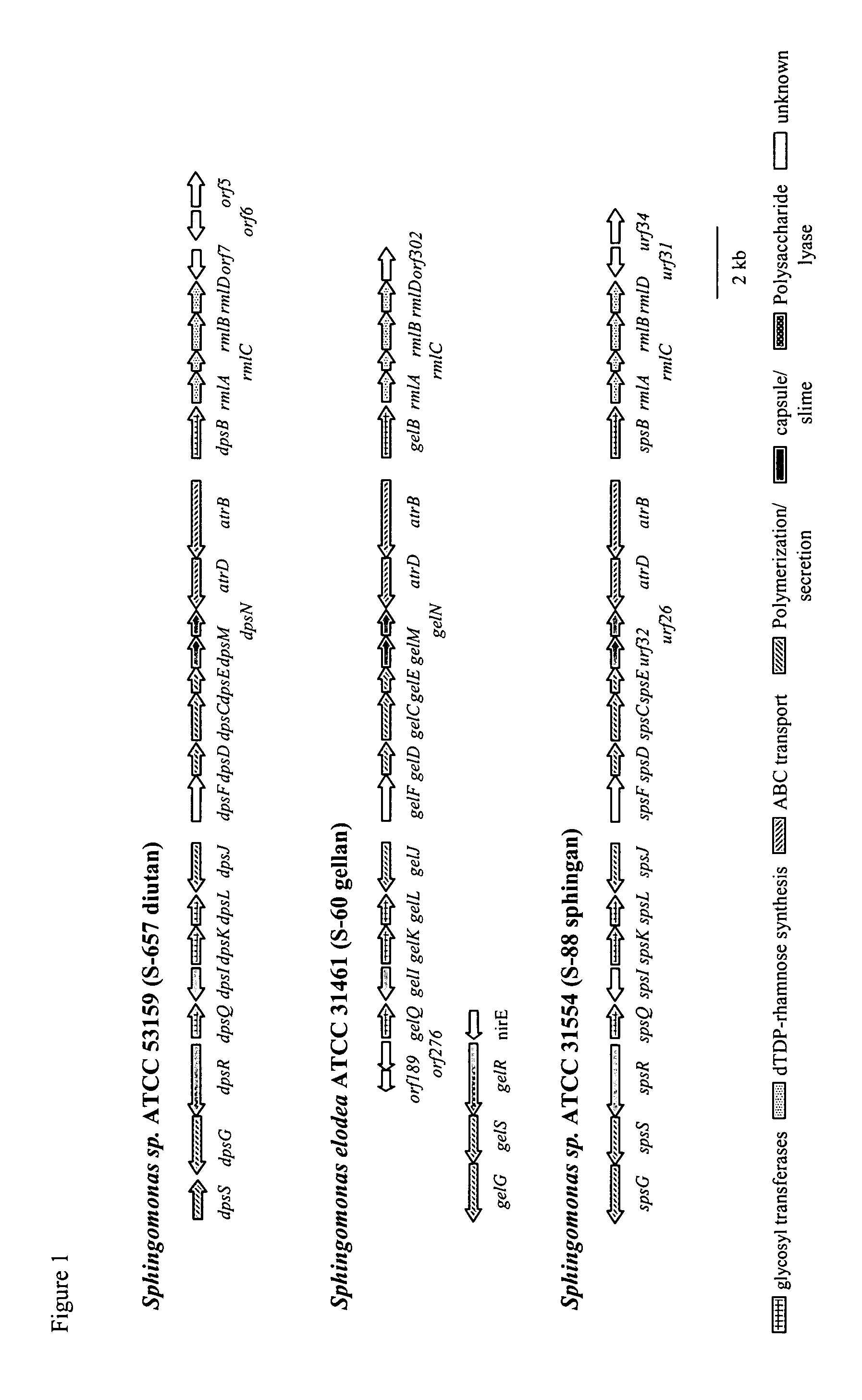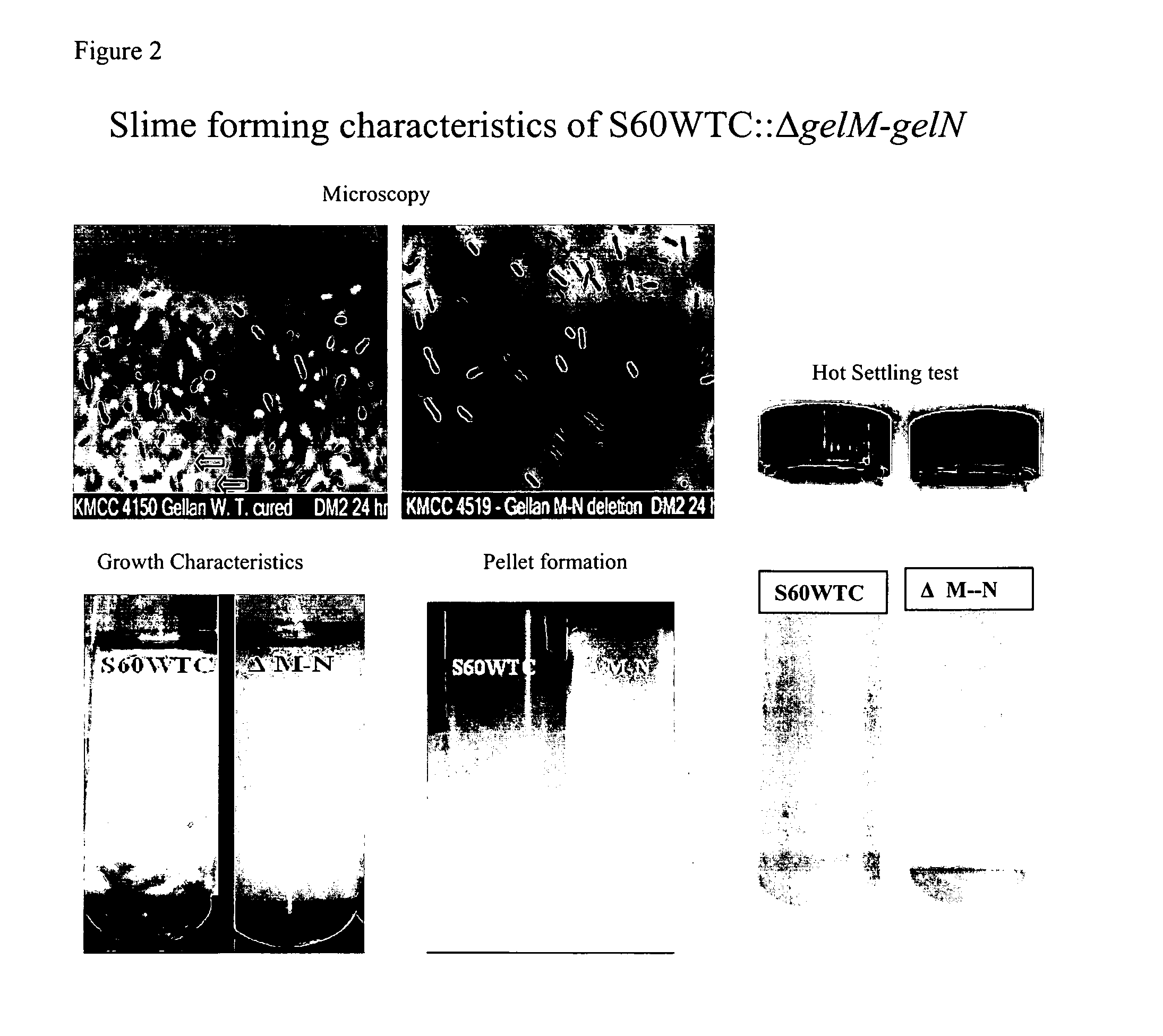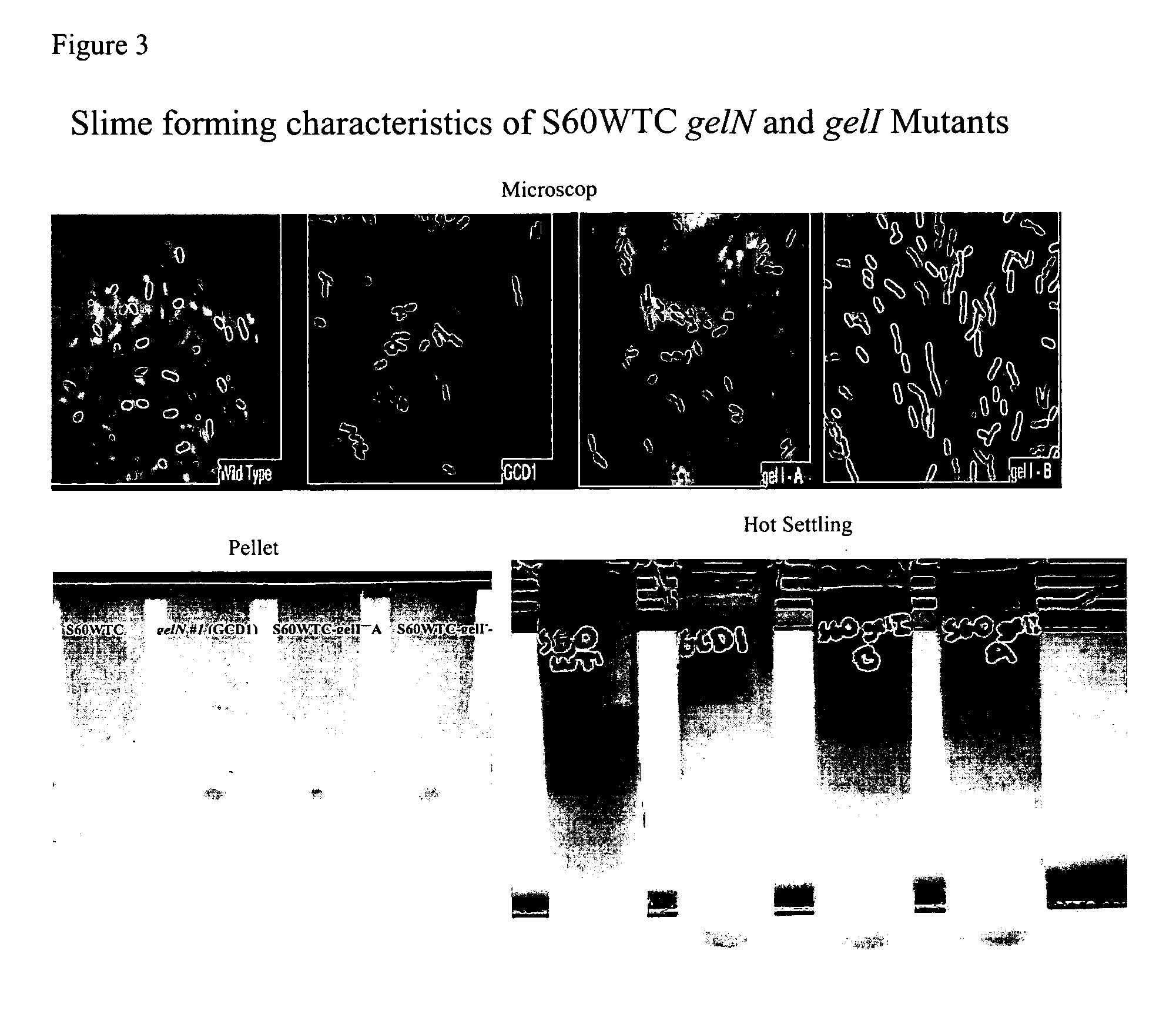Targeted gene deletions for polysaccharide slime formers
a polysaccharide and gene deletion technology, applied in the field of site-directed genetic methods for improving sphingan producing strains, can solve the problems of affecting the uptake of nutrients, clumps may interfere with techniques, and the effort to increase the productivity of fermentation
- Summary
- Abstract
- Description
- Claims
- Application Information
AI Technical Summary
Benefits of technology
Problems solved by technology
Method used
Image
Examples
example 1
Production of Gellan Slime-Forming Mutants
[0038]For construction of mutants of Sphingomonas elodea a derivative of ATCC 31461 designated S60 wtc1 was used, which has improved uptake of DNA. This strain can be readily made by one skilled in the art. PCR amplification was used to amplify regions flanking the gelM-gelN genes. See reference 3. The amplified fragments were cloned into the pLO2 vector and introduced into S60 wtc by conjugation to replace the gelM and gelN genes on the genome with the deletion, by double crossover homologous recombination. Vector pLO2 does not replicate in S60 wtc, so initial selection for kanamycin resistance selects for those colonies in which the plasmid has integrated into the chromosome by homologous recombination. The vector also contains the gene sacB. This gene confers sensitivity to sucrose. Thus selection on sucrose can be used to detect isolates that have lost the plasmid and retain one copy of the deletion or wild-type genes 1S. elodea ATCC 314...
example 2
Characterization of gelM-gelN Deletion Strains
[0040]The gelM-gelN deletion isolates were evaluated in shake flask fermentations. The ΔgelM-gelN culture broth was fluid and smooth compared to the more solid, viscous S60 wtc broth. Precipitation with isopropyl alcohol produced longer, thicker, fibers from the mutant strains compared to S60 wtc fibers. However, the deletion mutants had 22% reduction in yield of total precipitable material and produced only 30% of the broth viscosity of wild-type. The gellan produced had a normal composition of sugars, and glyceryl and acetyl substituents.
[0041]The mutants were evaluated for slime forming characteristics, using several techniques, including microscopic evaluation, cell clumping, cell pellet formation, and hot settling test, as shown in FIG. 2.
[0042]The hot settling test consisted of heating the gellan broth in the autoclave for ten minutes to melt the gellan, then transferring the hot broth to a large test tube and incubating overnight ...
example 3
Construction of Gellan Slime-Forming Mutants
[0045]A deletion was constructed of gelN for gellan biosynthesis. PCR primers were designed to amplify DNA fragments upstream (500 bp) and downstream (401 bp) of the gelN gene [3]. Primers used are shown in Table 1.
[0046]
TABLE 1Primers for construction of gelN deletion mutant.PrimerSequencePurposeSacI-GelN primer 15′ TGGAGCTC-GGTGCTGTGGTTGTTCTT 3′Amplifies 500 bp upstream(SEQ ID NO: 1)of gelNXbaI-GelN primer 25′ GGTCTAGA-GTCAGGCCGGTTGAACAT 3′(SEQ ID NO: 2)XbaI-GelN primer 35′ AGTCTAGA-GCCTGAACGCCGAAAGGG 3′Amplifies 401 bp(SEQ ID NO: 3)downstream of gelNSphI-GelN primer 45′ GTTGCATGC-GGTGATGGTGGAGAATGG 3′(SEQ ID NO: 4)
[0047]Primers SacI-GelNprimer1 and XbaI-GelNprimer2 were used to amplify a 500 bp fragment from the gelM gene as a SacI-XbaI fragment (total 516 bp). Primers XbaI-GelNprimer3 and SphI-GelNprimer4 were used to amplify a 401 bp fragment from the atrD gene as an XbaI-SphI fragment (total 418 bp). Since the end of the gelM gene ov...
PUM
| Property | Measurement | Unit |
|---|---|---|
| pH | aaaaa | aaaaa |
| temperature | aaaaa | aaaaa |
| outer diameter | aaaaa | aaaaa |
Abstract
Description
Claims
Application Information
 Login to View More
Login to View More - R&D
- Intellectual Property
- Life Sciences
- Materials
- Tech Scout
- Unparalleled Data Quality
- Higher Quality Content
- 60% Fewer Hallucinations
Browse by: Latest US Patents, China's latest patents, Technical Efficacy Thesaurus, Application Domain, Technology Topic, Popular Technical Reports.
© 2025 PatSnap. All rights reserved.Legal|Privacy policy|Modern Slavery Act Transparency Statement|Sitemap|About US| Contact US: help@patsnap.com



